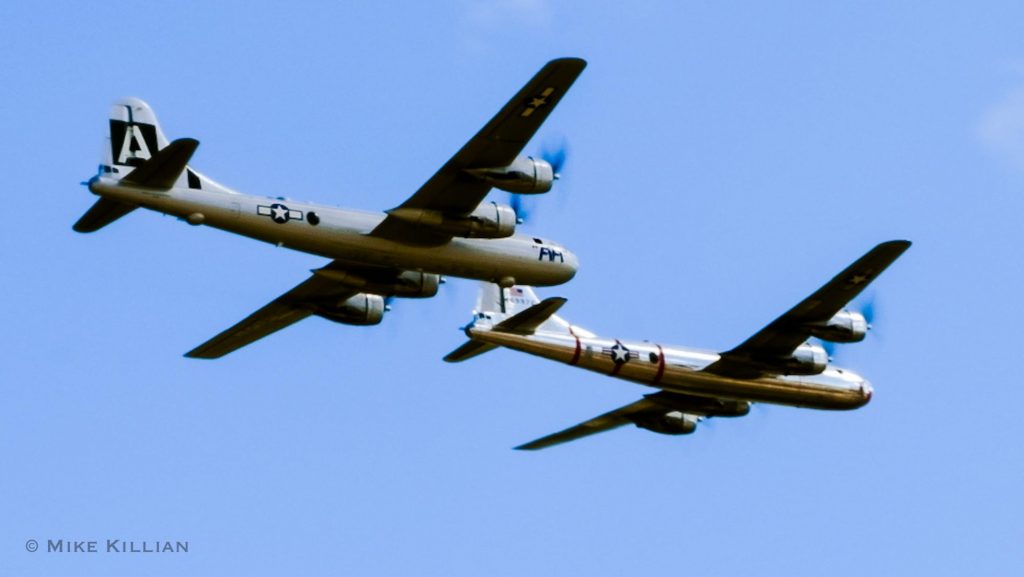Most of the older performance aircraft still in use by the military – including the F-15, F-16, U-2 spy plane, B-52 and B-1 bomber, are off-limits to the general public. A ride in one usually is limited to a high-level military official and, occasionally, the media.
A noted exception is the B-29 bomber. Of the nearly 4,000 produced during WWII, only two are still flying, and they are operated by not-for-profit organizations: FiFi, by the Commemorative Air Force, and Doc, by Doc’s Friends, Inc.
Because the operators of these outfits are non-military, regular folk can buy rides. The planes changed the course of history. By dropping atomic bombs – Little Boy and Fat Man – on the Japanese cities of Hiroshima and Nagasaki in 1945, the B-29 effectively put an end to WWII in the Pacific theatre.
The actual two planes that dropped those bombs are now housed in museums – the Enola Gay (Hiroshima) in Smithsonian’s Steven F. Udvar-Hazy Center near Washington, DC, and Bockscar (Nagasaki) in the National Museum of the U.S. Air Force in Dayton, Ohio.
The B-29 was developed in the early 1940s as a long-range bomber, and, depending upon its configuration, capable of reaching altitudes above 30,000 feet carrying up to 20,000 pounds of ordnance some 3,000 miles without refueling. Its four turboprop engines gave it staying power if say, one were to be compromised in battle or testing.
But the engines had their shortfalls, too. Some 414 B-29s were lost over Japan during the mid-1940s, and later 33 over Korea, plus countless others which crashed in testing and under other circumstances, often due to engine failure from overheating and fire.
The last two B-29s are staples at air shows now, flying mainly from early spring to late fall. They are financed by volunteers, many somehow involved in WWII. Aviation photojournalist Mike Killian took a media ride in FiFi earlier this month (link below) from Dallas to Houston, Texas, and described his flight.
“FiFi is as close to a time machine as I can think of,” says Killian. “You hear and feel the engines – can smell the plane come alive – and it brings new respect to our grandfathers who as youngsters went to war in it.”
FiFi Captain Neil Broussard shares Killian’s enthusiasm. “I was looking out the window of FiFi the other day, on the wing of another B-29, and didn’t understand how I even got there. I’ve flown a lot of formations with smaller bombers and planes, but the B-29 has unique challenges because the handling is less responsive.”
“You have to think further ahead – be careful of your decisions and not push boundaries,” continues Broussard. “We want to give a good display representative of a reasonable formation. But we aren’t flying to take risks. We fly so people can experience what these planes could do and to preserve history.”
Co-pilot Patrick Clayton echoes Broussard on the rigors of flying FiFi. “It’s a challenge. For example, we don’t have nose-wheel steering,” says Clayton. “We steer with brakes and asymmetrical power. Once we start down the runway, the asymmetrical power keeps us straight. In flight, she’s a pleasure to operate, but heavy on the controls. With modern aircraft, we have anti-braking systems, but with these old girls it can be a handful.”
Anyone interested in volunteering for The Commemorative Air Force or in purchasing a ride on one of its historic planes, see the link below. For sure, this reporter is interested in someday taking one of these flights.

